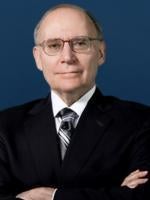Over an objection by the IRS, the Tax Court recently ruled in Kapur v. Commissioner[1] that it could limit discovery and permit statistical sampling of voluminous data related to a claimed research credit. The court refused, however, to protect the taxpayer from a burdensome demand by the IRS for production of information about every item in a population of 2,000 to 3,000 from which a statistical sample would be drawn.
At issue in Kapur was the taxpayer’s entitlement to federal income tax credits of $186,648 for qualified research. The taxpayer alleged that it conducted 2,000 to 3,000 research projects for the taxable years in issue. To determine the credits attributable to the projects, the taxpayer used statistical sampling. It stratified the projects apparently according to size and determined that the two largest projects amounted to 72% of the qualified research expenses. The taxpayer did not identify each of the remaining projects but apparently extrapolated the findings of the two largest projects to the 2,000 to 3,000 remaining projects. The taxpayer thus appears not to have sampled projects in any stratum other than the largest stratum to calculate the credits that it claimed in its return.
The IRS examined the taxpayer’s return and disallowed the credits. The taxpayer challenged the disallowance in Tax Court. During formal discovery, the IRS demanded production of the taxpayer’s sampling frame. A sampling frame is a list of all the projects from which the sample – including the two largest projects – was drawn. For each project in the sampling frame, the IRS asked for a brief description of the project and the qualified research activities that the taxpayer performed for the project. The IRS thus asked the taxpayer to perform this work for the 2,000 to 3,000 projects in the sampling frame, incurring a cost the taxpayer said might exceed the $186,648 credit amount in dispute.
The taxpayer argued that the IRS’s discovery request exceeded the reasonable needs of the case and that the Tax Court should limit the IRS’s discovery to the two sample projects.[2] In response, the IRS denied that the Tax Court had the authority to limit the scope of discovery to the sample projects absent an agreement from the IRS. The IRS rationale was that a taxpayer has the burden of proving its entitlement to credits claimed in its tax return[3] and has the statutory duty to maintain records to substantiate the credits.[4] Statistical sampling, argued the IRS, carries a taxpayer’s burden of proof only if the sample is randomly drawn from a sampling frame of items and is representative of the items in the sample frame. Without the information about the sampling frame, the IRS said that it could not determine if the purported sample was representative of all the projects in the sampling frame.
The Tax Court in Kapur hedged on the conflict between the taxpayer’s burden of proof and the taxpayer’s right not to be harassed by excessive discovery demands. Rejecting the IRS argument, the court ruled that it has the authority to order sampling over the objection of the IRS. Rejecting the taxpayer’s argument, the court ruled that in the discovery phase of the proceedings it would not find the IRS’s discovery demands exceeded the needs of the case. It believed that the IRS’s need for the information outweighed the taxpayer’s expense in proving its entitlement to the credits attributable to the unsampled 2,000 to 3,000 projects.
In its opposition to the taxpayer’s motion for protection from the IRS’s discovery demand, the IRS revealed its view of statistical sampling in a research credit case. Its view is that statistical sampling really cannot be validly performed:
“Because representativeness is a threshold requirement for any reliable sample, sampling is not likely to lead to reliable determinations of whether petitioners have met their burden to prove entitlement to the Research Credits. The varied and fact intensive determinations that the four-part test requires with respect to each business component (or a subset of a business component under the shrinking-back rule) do not support a finding of a homogenous population to sample reliably. Indeed, petitioners claim in the instant motion that the projects at issue in this case concern 3,001 unique business components—if each project is unique, it is not clear how any of the projects could be representative of the population of projects.” [5]
A “business component” to which the IRS referred is merely a product, process, computer software technique, formula or invention held by the taxpayer for sale, lease, or license, or used by the taxpayer in its trade or business.[6] It is the subject of the research activities.
The “four-part test” to which the IRS referred requires a taxpayer to prove that (i) the expenditures for the activities represent research and development costs in the experimental or laboratory sense to eliminate uncertainty in the design or development of the business component, (ii) the activities are undertaken to discover information that is technological in nature, (iii) the technological information is intended to be useful in the development or improvement of a business component, and (iv) substantially all the research activities constitute a process of experimentation related to the function, performance, reliability, or quality of the business component that the activities are intended to develop or improve.[7] Each test has subtests.
Even if research activities satisfy the four-part test, the activities still do not qualify for the credits if the research activities (i) are performed after commercial production of the business component, (ii) merely adapt an existing business component to a particular customer’s requirements or need, (iii) duplicate an existing business component, (iv) are studies concerning efficiency, management, marketing, routine or quality control, (v) design or develop internal use software except in limited circumstances, (vi) are conducted outside the United States, (vii) are in the social sciences, arts, or humanities, (viii) are funded by grant, contract, or otherwise by another person.[8]
All these tests and disqualifications explain the IRS’s assertion that the “varied and fact intensive determinations … do not support a finding of a homogenous population to sample reliably.” The chance of finding a sample item in the sampling frame that addresses all these variables is impossible.
An order issued by the Tax Court in Kroeschell v. Commissioner[9] suggests a practical means a taxpayer could use to conduct statistical sampling in a research credit case over the objection of the IRS. The taxpayer in Kroeschell proposed that the sample be analyzed for only two properties: “Yes It Qualifies” or “No It Does Not Qualify.” The court rejected this approach in Kroeschell because even if the court determined that the taxpayer’s activities for the sample item were qualified research activities and that the qualified research expenses for the qualified activities were a specific amount, the taxpayer in Kroeschell never showed the amount of research expenses that it claimed for the sample item. Without knowing the amount of expenses claimed, the court could not divide that amount into the amount the court determined as qualified research expenses to calculate an allowable percentage that could be extrapolated to the population.
Perhaps that defect can be cured. If a taxpayer can devise a reasonable approach to attribute qualified research expenses to each project that it claims,[10] a percentage of the claimed expenses that the court allows could be calculated based on an analysis “Yes It Qualifies” or “No It Does Not Qualify.” This approach might bypass a search for a representative sample that never can be found.
Footnotes
[1] T.C. Memo. 2024-28 (Mar. 12, 2024).
[2] T.C. Rule 70 (b)(1): Discovery must be proportional to the needs of the case, considering the importance of the issues at stake in the action, the amount in controversy, the parties’ relative access to relevant information, the parties’ resources, the importance of the discovery in resolving the issues, and whether the burden or expense of the proposed discovery outweighs its likely benefit. T.C. Rule 70(b)(1) is the Tax Court analogue of Fed. R. Civ. P. 26(b)(1).
[3] T.C. Rule 142(a).
[4] IRC §6011; Treas. Reg. §1.41-4(d).
[5] IRS’s First Supplemental Response to Motion for Protective Order, par. 27 (11-15-23).
[6] IRC §41(d)(2)(B).
[7] IRC §41(d)(1).
[8] IRC §41(d)(3).
[9] Docket #15748-18 (12-13-2019).
[10] See Betz v. Commissioner, 2023 WL 4366431 (U.S. Tax Ct. 2023), permitting a reasonable estimate of qualified research expenses based on evidence in the record of qualified research activities.




 />i
/>i

